- How Yoga Aids in Digestion
- Wind-relieving Pose
- Seated Forward Bend
- Half Lord of The Fish Pose
- Bow Pose
- Thunderbolt Pose
- Boat Pose
- Camel Pose

Indigestion is a health issue that everyone experiences in the form of bloating symptoms, flatulence, heaviness, abdominal discomfort, and cramps regardless of their age group. The common causes of indigestion include intestinal blockage, the reduced blood supply in the intestine, inflammation in the pancreas or stomach.
In the yogic language ‘Agni (digestive fire)’ is called to the energy associated with our Navel chakra that takes care of our digestion system. You may not realize this but mental stress and anxiety also produce an imbalance in the Navel chakra that disturbs this digestive fire.
Yogis practice different yoga poses to stimulate digestive fire and improve gut health. Here’s how yoga aids in better digestion;
How does Yoga help in better digestion?
- One of the reasons yoga aids in digestion is because yoga poses focuses on parasympathetic activation i.e. rest & digestion system of the body
This article is specifically designed to elaborate on some yoga postures that target getting rid of all the digestive issues. So, hop on the mat to ignite the digestive fire and to get your digestive system back on track.
Try These 7 Yoga Poses for Digestion
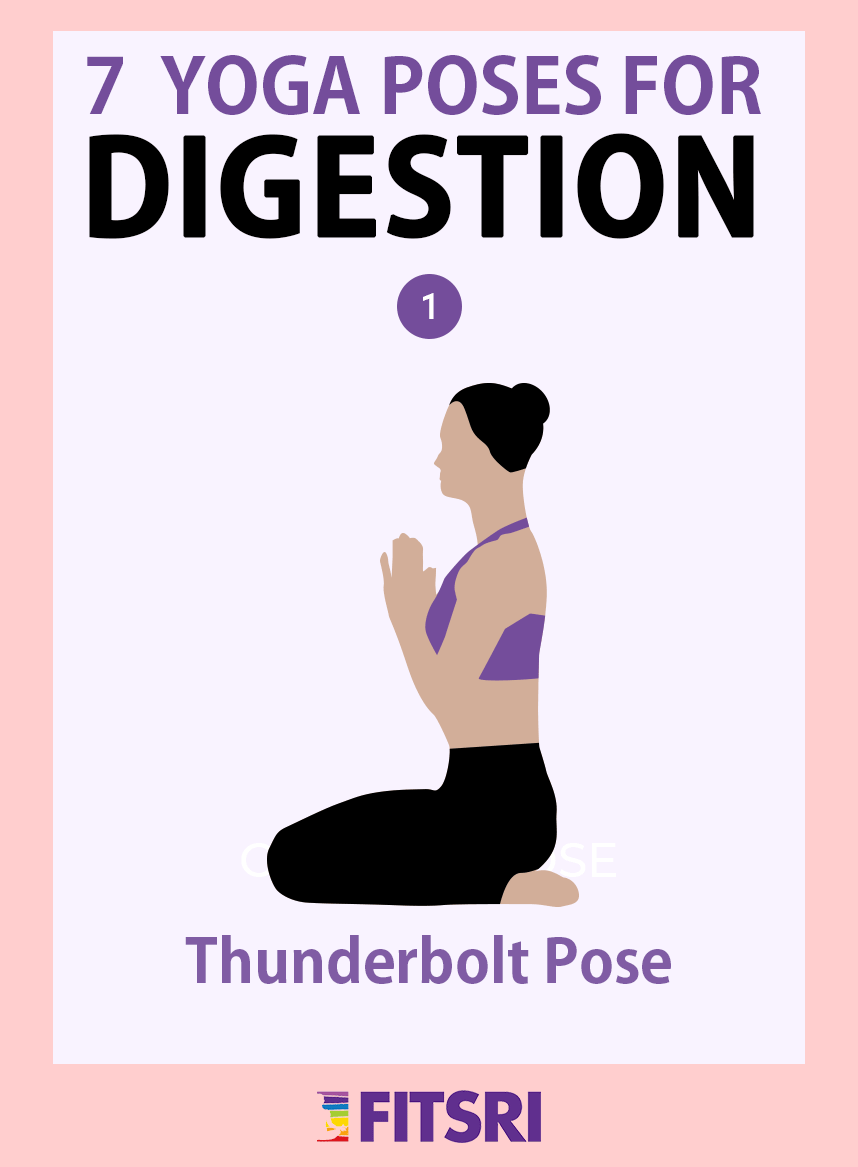
1. Wind-relieving Pose (Pawanmuktasana)
The wind-relieving pose is practiced to get rid of excess air from the gastrointestinal tract. For this, lying in the supine position draw your bent knees towards the chest wrapping the arms around the shins. Simultaneously, the head and shoulders are also lifted off the floor bringing the chin in between the knees.
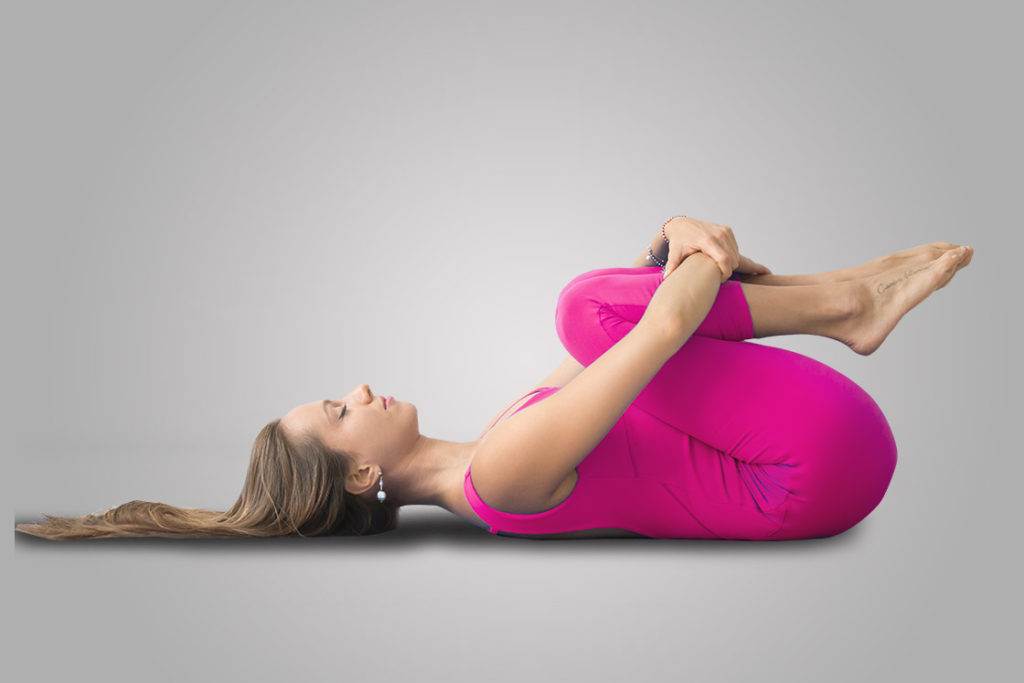
How it helps in digestion:
Pawanmuktasana massages your ascending and descending colon and aids in promoting peristalsis (symmetrical contraction and relaxation of muscles).
The wind-relieving pose stimulates Vata dosha including air and ether element. It also stimulates the Manipura chakra which is the “site of fire”, regulating gastrointestinal functioning. Hence, it is most beneficial for people suffering from IBS and flatulence.
In the famous yoga book Asana Pranayama Mudra Bandha, Swami Satyananda Saraswati has also described that wind-relieving pose exerts pressure on the abdomen and massages the digestive organs.
Helpful tips:
If drawing the knees together to the chest seems daunting, it can be modified by bringing one knee at a time towards the chest. Meanwhile, the other leg is kept extended and it rests on the floor.
2. Seated Forward Bend Pose (Paschimottanasana)
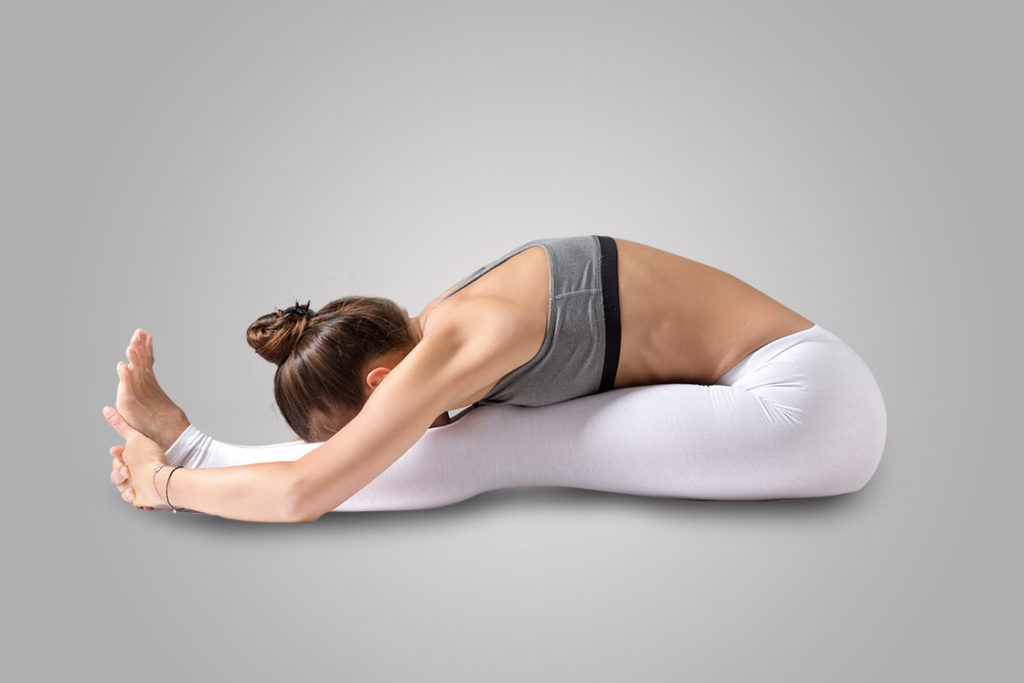
Paschimottanasana is performed in a seated position extending the legs in front. The upper body is folded forward with arms extended to grab the toes with respective hands and forehead touches the knees.
How it helps in digestion:
Paschimottanasana puts the body in a horizontal position and puts immense pressure on the liver, spleen, pancreas, and intestines. This improves the flow of blood to these organs facilitating the process of digestion.
Besides toning the abdominal organs it prevents sluggishness of these organs which brings slimness to the waistline. It stimulates the Samana prana at the solar plexus (navel), thereby adequately igniting the digestive fire.
This is the reason Swami Swatmarama in his yogic text of Hatha Yoga Pradipika described Paschimottanasana as “the most excellent of all asanas causes the breath to flow through the Sushumna, fans the fire of appetite [pitta], makes the loins supple [vata] and removes all ailments [caused by pitta and vata].”
Helpful tips:
In the case of indigestion issues like constipation, If you feel too much pressure on the belly due to the forward fold, try placing a bolster over your thighs near the lower abdomen. Then, fold forward over the horizontally placed bolster.
People in the beginning struggle with approaching the toes. For this experts suggest grabbing the knees, lower legs, or ankle, wherever comfortably possible.
3. Half Lord of The Fish Pose (Ardha Matsyendrasana)
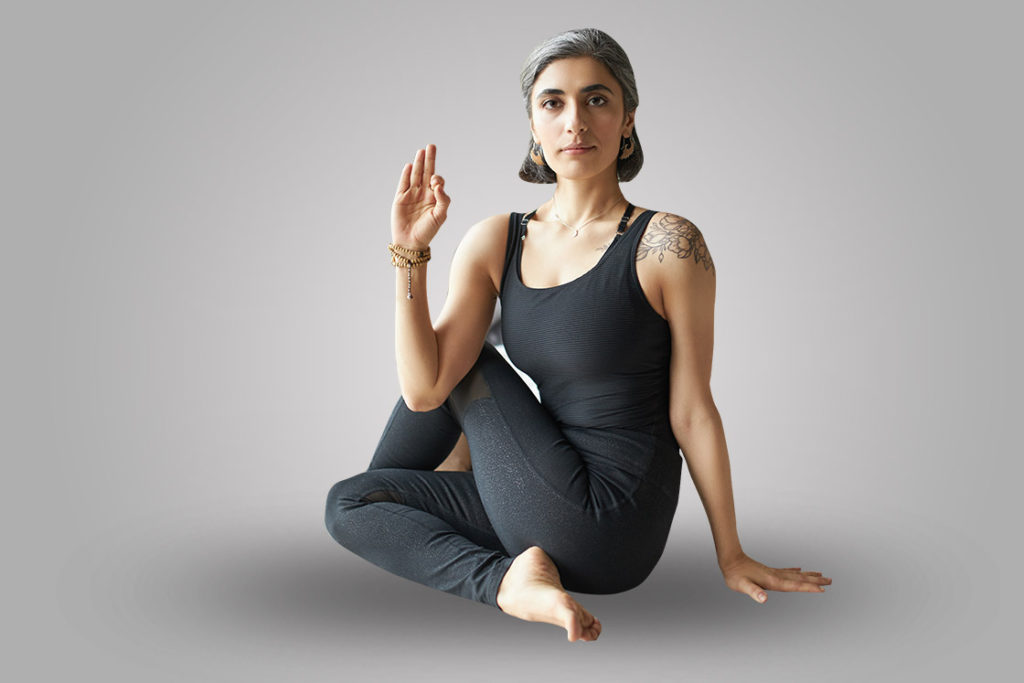
It is a seated twisting posture that squeezes the internal organs and any stagnant blood in the lower abdomen.
Sit bending the left knee and placing the left foot near the right hip. Place the right foot outside the left knee. The spine is swirled by taking the left on the outside of the right knee grabbing the right foot. Finally, the right arm is wrapped around the back and the neck is turned to look past the right shoulder.
How it helps in digestion:
Ardha Matsyendrasana leaves a compressing and massaging effect on the abdominal muscles. “this compression, followed by release when you come out of the twist, stimulates the digestive organs”, explains Yoga teacher Sally Lovett.
Helpful tips: There are several variations of ardha matsyendrasana to try based on your flexibility and endurance.
However, for experiencing a squeeze in the abdominal muscles for alleviating indigestion, you can twist the upper body bending only one leg. Further placing the corresponding foot either inside or outside of the alternative knee.
This compression followed by a release sequence of Ardha matsyendrasana creates a wringing action to remove toxins. It also lets fresh and oxygenated blood to reach the digestive organs.
4. Bow Pose (Dhanurasana)
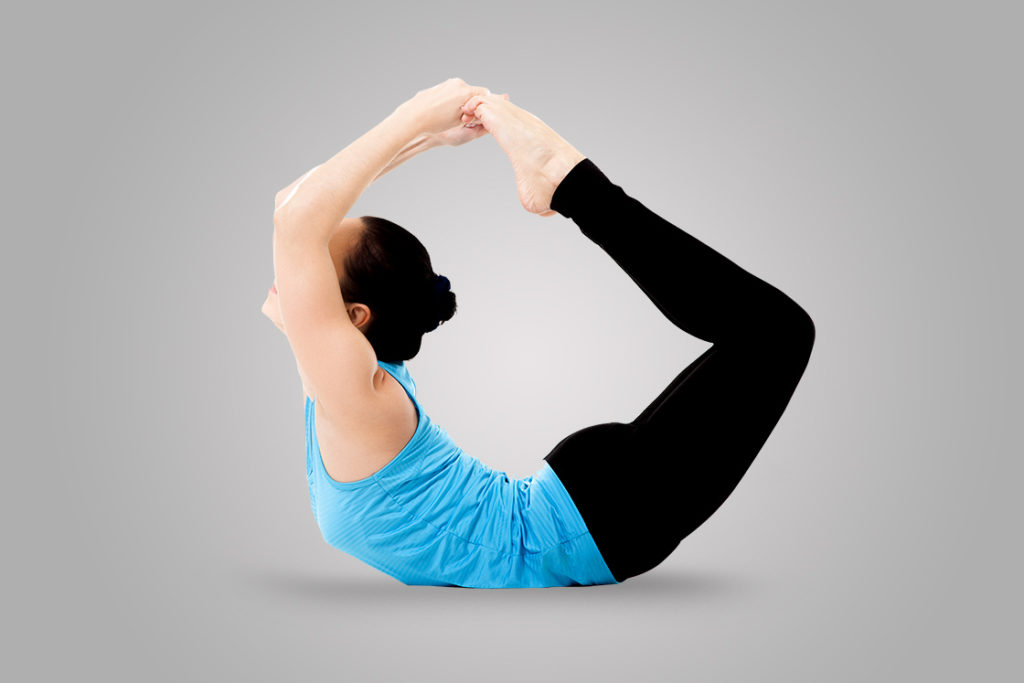
Backbend poses can aids in digestion by upward the direction of abdominal organs. In bow pose, the arms and legs are stretched like a bow’s (dhanush) string extending the abdominal muscles. Lying on your belly, the knees are bent, feet are raised, and arms are extended back to grab the ankles. It is enhanced by simultaneously lifting the chest and pulling the legs.
How it helps in digestion:
The body in bow pose can be rocked to-and-fro gently synced with rhythmic breathing.
“The rocking motion stimulates the digestive tract, improving the function of the large and small intestine”, explains yoga instructor Kylan Fischer.
Dhanurasana acts on the entire alimentary canal. It tones the pancreas and adrenal gland triggering a balanced secretion between the two. The liver and kidneys are also massaged leading to improved digestion and excretion.
The final pose coupled with deep breaths expands and contracts the abdominal organs stimulating their functions. This results in getting rid of constipation, indigestion, or other gastrointestinal disorders.
In bow pose, the anterior abdominal wall muscles are stretched fully. Also, it triggers the functioning of parasympathetic organs by stimulating intercostal and iliohypogastric nerves. Thus, facilitates better digestion as supported by a study conducted by International Journal of Trend in Scientific Research in June 2020.
Helpful tips:
A yoga strap is a very useful prop to easily get into the bow pose for digestion. You can wrap it around the ankles, and to execute the pose hold the straps. Pull it with your hands to bring the feet closer to the buttocks. You can also try putting a folded blanket under the pelvis, it reduces pressure on the core muscles.
5. Thunderbolt Pose (Vajrasana)
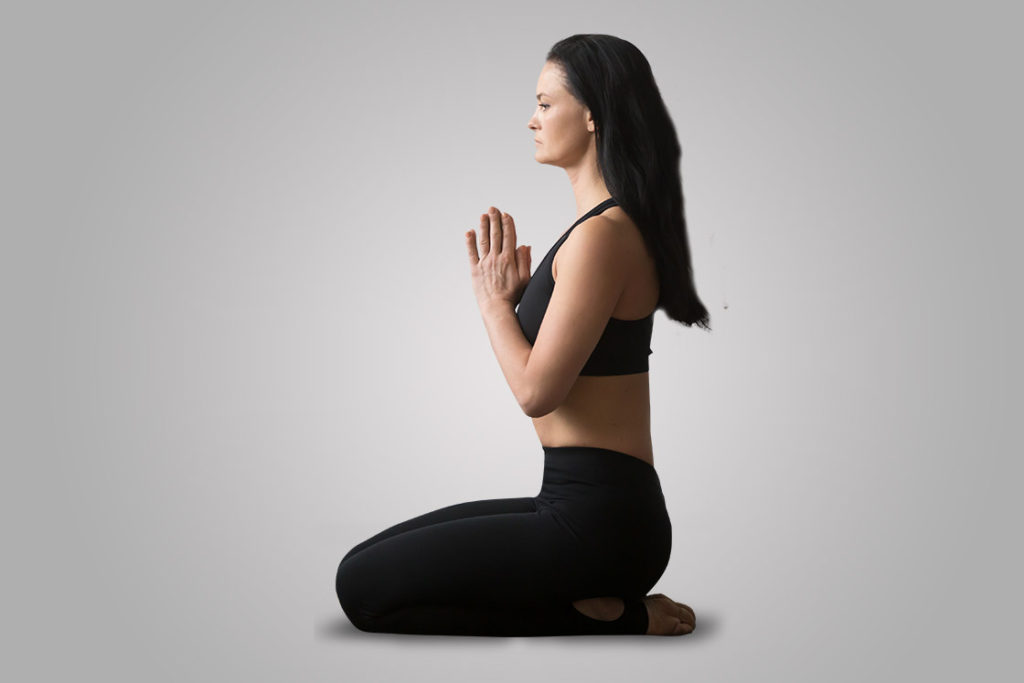
Vajrasana serves as a catalyst for promoting the process of digestion after the meal. Simply, kneel down on the floor bringing the big toes together and forming a “V” with feet separating the heels. Then, rest your buttocks on the heels and palms on the knees.
How it helps in digestion:
For digesting the complex food particles into the simpler units, an increased blood supply is required in the digestive system.
Holding Vajrasana does exactly the same as mentioned above. As it is performed by folding the legs, it reduces blood supply towards the lower body. Thus, the blood circulation eventually improves within the intestinal region boosting digestion.
Yogacharya Anoop states, “Vajrasana is also known to activate Vajra Nadi which works for improving digestion.” Vajra Nadi is a linked psychic channel to the genito-urinary system and the gastrointestinal system works in association with the urinary system to facilitate the elimination process. Thus also improves digestion.
As stated above, yoga teacher Anoop also agrees that this pose improves blood flow towards the stomach and pelvic region. This helps in improved bowel movement and digestion.
Helpful tips:
If the ankles and knees are getting too much pressure while sitting in thunderbolt pose place a rolled-up towel between the thighs and calves.
Sitting on the heels might be discomforting for some. So for this, you can place yoga block between the feet, and evenly place your hips on it.
6. Boat Pose (Navasana)
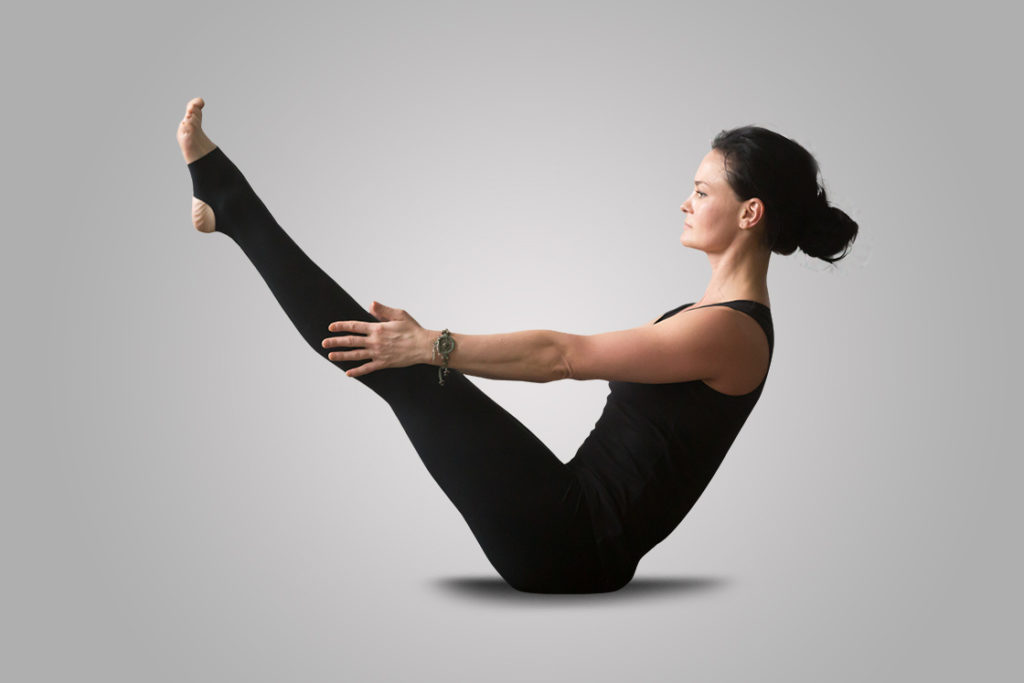
Navasana is performed by balancing the body over the sit bones. For this, the practitioner lifts the legs and upper body off the floor. In this posture, the body attains a “V”-like structure.
How it helps in digestion:
Navasana is another useful pose to aid better digestion as it contracts the abdominal muscles. It creates stress hormones in the body which improves the bowel movement.
Boat pose also stimulates the efficiency of the liver, pancreas, and kidneys thereby promoting the secretion of digestive juices and enzymes. Thus, it helps in improving digestion and removing waste products.
Yoga Guru B.K.S Iyengar also mentioned it as Paripurna Navasana in his book Light On Yoga. He elaborates that boat pose relieves the practitioner from bloating due to gas and cures other gastric issues.
Moreover, because Navasana is performed balancing the body on the sit bones, it raises the diaphragm enabling the influx of air through the abdomen. It relaxes the stomach and liver, strengthens the core and back muscles due to which abdominal digestion improves.
Helpful tips:
Navasana requires core strength and gives the body the shaking sensation. It is difficult for someone experiencing bloating or stomach pain. Therefore, try half boat pose, bending the knees with lifted feet and holding the thighs with hands.
7. Camel Pose (Ustrasana)
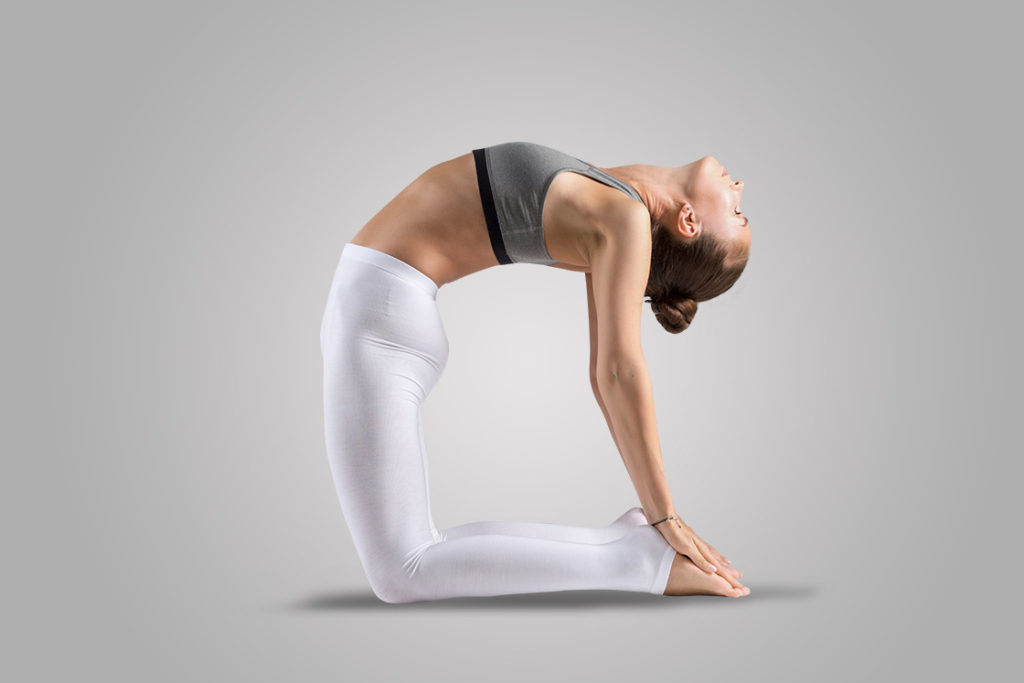
Ustrasana improves blood circulation to the digestive tracts. Perform it kneeling on the floor and arching the spine back to draw the arms towards heels. The hands are then pressed on the heels and the head is also thrown backward.
How it helps in digestion:
Due to the back-bending of the head in camel pose, it stretches the neck muscles. According to Ayurvedic practitioners, Ustrasana is known for opening the heart (Anahata) chakra and stimulates the Pachaka Pitta and Samana Vayu. Besides these the Apana, Udana, and Vyana Vayu are also balanced holding this pose.
It regulates the proper circulation and air around each cell of the body. Thus it helps in the proper digestion of the food.
The release of Apana Vayu, as one of the benefits of Ustrasana, is therapeutic in relieving constipation and dyspepsia.
Helpful tips:
In case reaching the heels seems tough for you, simply perform the back kneeling on the floor. You can place that hands over the sacrum.
Other modification could be placing a block beside each leg on outer side. Place your hands over the blocks while bending backward.
Conclusion
Get rid of your digestive issues, discomfort, and embarrassment due to always feeling bloated, constipated, or in pain with these poses.
These are all specialized natural ways of improving your digestive health. Therefore, following the proper practice guide follow them based on your comfort and need.




